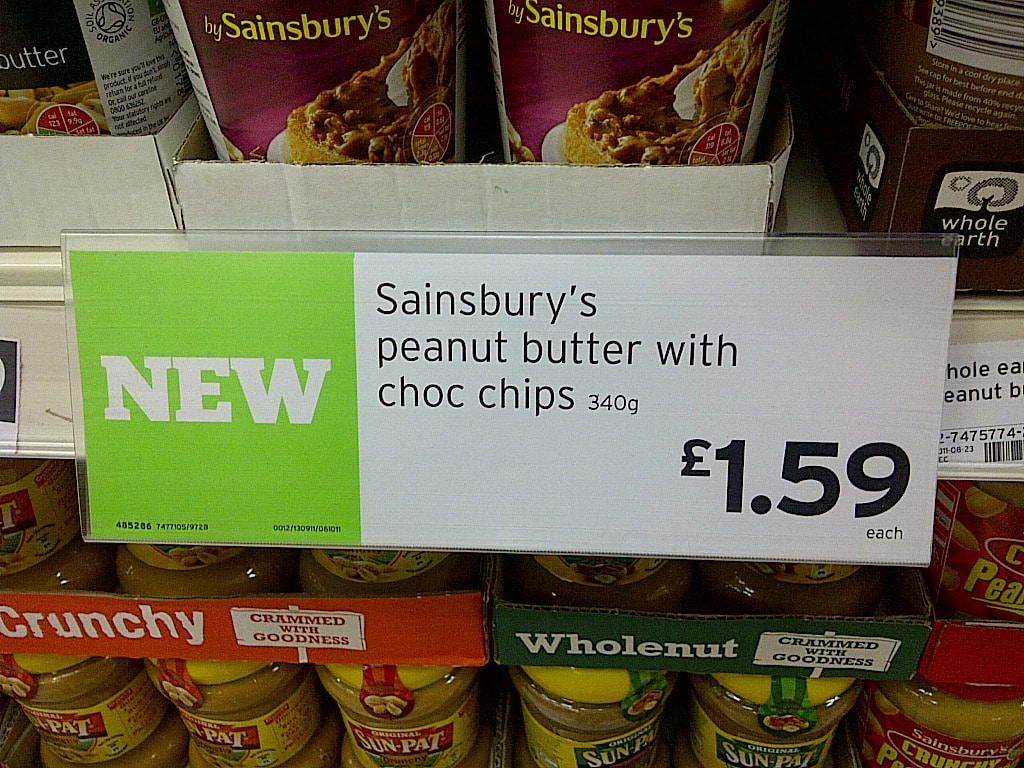Justin King and Sainsbury’s – Stuff of business legend.

Steve Dresser
Founder of Grocery Insight & retail influencer
"The man supermarket CEO's turn to" - BBC"

In around five years, when the next generation of school kids are using their iPad that that they get at the beginning of each school year (rather like the individual pencil I used to get), the business studies class will log onto a news website and trawl through the archives, researching iconic business turnarounds. Certainly, Justin King and Sainsbury’s should be right up there as stuff of business legend.
Of course the syllabus will point to M&S and and business legend Sir Stuart Rose’s rescue from the ‘evil’ eyes of Philip Green and subsequent turnaround, return to profit and hiring of Marc Bolland to take them into a brave new world as a ‘textbook’ turnaround.
However, what should be the case study is Justin King’s rescue of food retails fair lady J Sainsbury. Below is a potted history:
Established in 1869 it grew into the UK’s number 1 food retailer in the 70’s and 80’s and pioneered self service and quality food, led by John Sainsbury it went public in 1973 and was renowned for operational excellence with John at the helm little could go wrong.
Cousin David took over, introduced SABRE ordering systems into stores (after seeing them in the US) and from then on things started to go wrong, the company was too slow to react to Asda’s revival under Archie Norman and Tesco’s ramping up of their operation, introducing Tesco Value, the introduction of Clubcard which was scoffed at by Sainsbury’s only for them to launch the Reward card 18 months later.
When David (Lord Sainsbury) was moving into politics he’d appointed a CEO a year previous, Dino Adriano (he of ‘back to the floor’ fame, where he blustered when quizzed about salary, dropped tomato sauce everywhere) took the helm, primarily an accountant pioneered the disastrous value to shout about adverts with John Cleese. He was shifted sideways early 1999 to run the Homebase / US operation with his counterpart David Bremner running Sainsbury’s UK.
The writing was on the wall, with Tesco motoring ahead and Asda now fully owned by Wal*Mart, Adriano paid with his job in early 2000, Sir Peter Davis came in to run the supermarkets after being rejected for the CEO job in the 90’s, he did well in the first two years exceeding targets but it was very much calm before the storm, IE when he actually did anything, it bombed spectacularly.
He effectively wasted £3 billion on a botched technology and network spend, ok, to waste the full £3 billion is a little harsh but there’s been enough change since 2004 and Justin King to indicate that £3 billion was far too much to spend for what was ‘in real terms’ declining availability.
Justin King was approached in 2004, making his name at Mars, Asda (like many of today’s top retailers) and latterly running the M+S Food business, he allegedly turned down the job once as he didn’t think it a winnable situation.
When he took over, it was announced that Sir Peter was to move upstairs as chairman, however that was reversed and Sir Peter left the business with Philip Hampton coming in as chairman. Whether Justin felt working under Sir Peter was the
major sticking point is unknown but it would have been difficult to implement changes basically abandoning the automated depots that Sir Peter introduced.
Justin was obviously briefed on the issues and knew what was occurring in the business, I recall working 2 night shifts over the bank holiday weekend to implement 3000 price reductions that he introduced to make sure the company was at least competitive on price whilst the nuts and bolts of the business were looked at.
A stroke of luck (the sort that changes things massively) was Morrisons purchasing Safeway, that was one of the final straws that saw Sir Peter fall on his sword, there were now four real competitors, Morrisons were extremely strong in the north and the Safeway acquisition would take them nationwide. Another business legend, unsung hero Lawrence Christensen was an immensely respected supply chain man who Morrisons wanted to keep for their new enlarged board.
He decided against it and jumped ship to join Sainsbury’s and immediately saw the issues, he’s discussed it before ‘it was like running a high performance car in second gear’ – he found no actual problem with the ordering system, it was more the information that it gets, store staff scan out of stocks and low levels twice a day – morning and night.
When the system reconciles the scan against the system, there will be mismatches where the system believes stock is there but the physical reality is that it’s not, if the system thinks there is 2-3-4 units in stock, then it won’t automatically reorder the stock until it’s told there is 0 left.
A report is generated instructing staff to check and count manually the stock that is there, including checking warehouses and back areas. Once that is confirmed, it’s keyed into the system and the ordering system will do its business for it to arrive into the store.
There are a number of reasons for stock not being there; theft, damages, checkouts not scanning it properly, depot mis-picks and the like.
Before Justin King joined, gap scans were done twice per week(!), when he took over, they reverted to twice per day, the system simply wasn’t getting the information on the ‘reduced counting’ that Peter Davis brought in to save time, the availability was so poor because the system didn’t know what was out of stock, couldn’t forecast sales properly so hence the yawning gaps. Add to that mis-functioning depots that were damaging cases and not picking the right stock and you’ve got a store with more gaps than stock.
It is simple changes like this that make such a difference to the company and its employees. There were other changes that were brought in during those early days to help serve the customer before longer term IT fixes were brought in, for example counting is now done on a handset rather than the reams of paper. Because counts are done more often, the exception report is far shorter as there are not as many mismatches.
Internal replenishment systems were launched which saw a wholesale reduction in hours used on daytime, better stock control and warehouse controls meant that overstocks were worked each day rather than certain aisles on certain days. This reduction meant it was easily achievable for the store to work overstocks at a defined time rather than hiring staff to do it.
Replenishment, deliveries and the like were moved to nights were productivity is far higher and brought JS into line with other operators.
Key strategic decisions since fixing the nuts and bolts have been made:
- Moves into convenience by acquisitions – Jacksons, Bells, Beaumont and new build stores
- Ramping up of the online business with more stores now offering online delivery
- Non Food space extensions – Any extensions on stores now feature significant non food space.
Whilst Justin can’t get back 15 years of Tesco progression (Sir Terry Leahy, the original business legend) or compete with the cash rich Walmart backed Asda, he has done a great job of making Sainsbury’s great again. True, the margins aren’t what they could be, but there is always room for improvement and Sainsbury’s now sits near the top of the availability chart rather than firmly rooted to the bottom like they used to be.
Delivering 19 consecutive quarters of growth, still sitting at the top of growth tables with Morrisons who both are growing ahead of the market.
Not bad for a retailer that doesn’t know whether it’s value or quality despite having sat out the toughest recession for a generation.
Of course, Sir Stuart has done a great job with M+S, a real contender for the moniker of business legend. Alas the real turnaround king is Justin, a business legend.
I don’t think we always appreciate the size of job he undertook at Sainsbury’s or appreciate their stellar performance in one of the most competitive markets in Europe. We continually keep an eye on the market in our blog of course!
Our weekly retail insight email covers the latest events in the industry; store operations, market developments, future thoughts, store visits and new promotional packages are all covered. Every single week. Please visit our email retail insight page for further information around subscribing.
Grocery Insight provide market insight on the UK sector with a focus on individual retailers and the wider market too.
Our insight is useful to various stakeholders and due to our store based focus our insight can be delivered to suppliers to focus on growth opportunities, analysts and investors to assess the business performance and long term outlook and retailers themselves to assess best practice.
